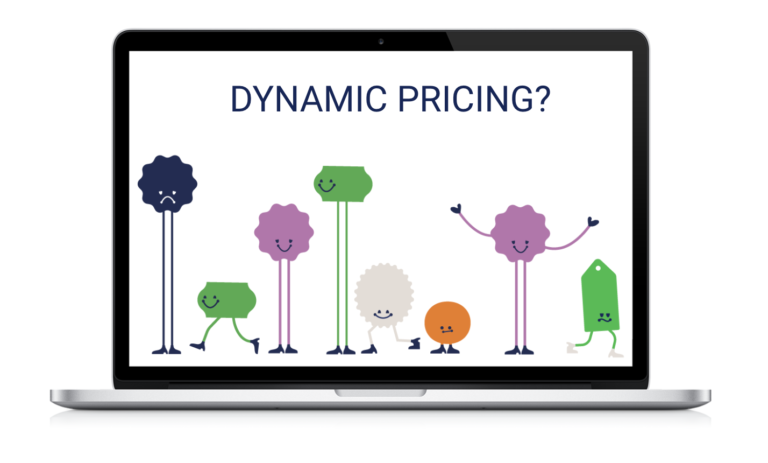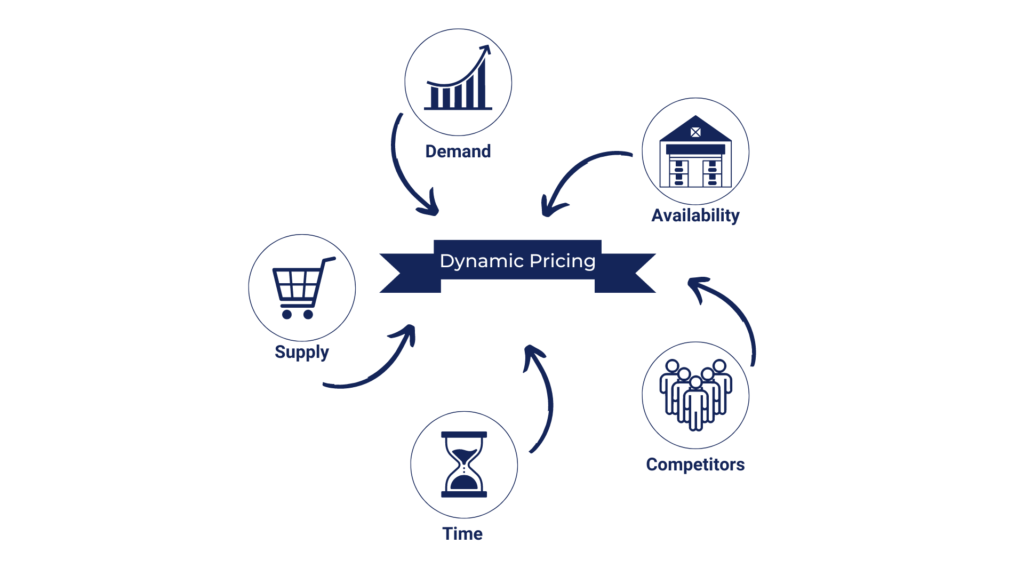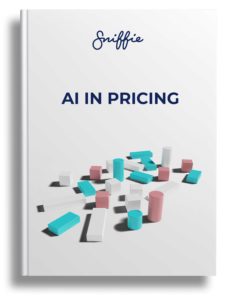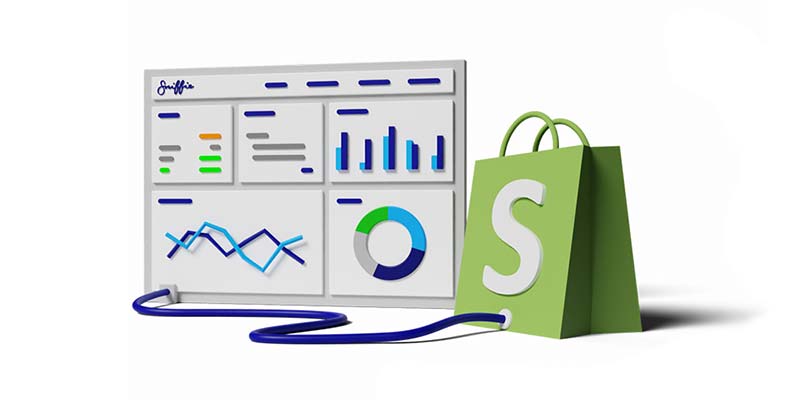The dynamic pricing trend has taken the e-commerce industry by storm. Not too long ago dynamic pricing was only accessible to notable big retailers like Amazon. However, many affordable dynamic pricing tools are now available for most online retailers. If you own a Shopify store, you already know how fast the online marketplace is changing. Therefore, your pricing strategies should change along with the prevailing market conditions to keep your sales at their highest. However, few people know how to use an efficient dynamic pricing strategy for their Shopify store. This article will help you explore dynamic pricing, why it is crucial for your business, and how to implement it successfully on your Shopify store.
Dynamic pricing explained
You may have heard of dynamic pricing as surge pricing, demand pricing, real-time pricing, or algorithmic pricing. It is the pricing strategy where product prices are flexible and continuously updated based on real-time market conditions such as competitors’ pricing, market demand, or supply changes. For example, if stock for a certain product drops on Amazon, you’ll likely see a surge in the price within minutes. You can check more examples of dynamic pricing from our earlier blog post here.

Why is dynamic pricing important for Shopify stores?
There are some key reasons why many business owners choose dynamic pricing for their online stores, including Shopify. With dynamic pricing, you have a great method to increase sales and react immediately to the ever-changing market. You can take advantage of high-demand periods to raise prices, capture sales opportunities and maximize profit. When it comes to low demand periods, you can lower prices to trigger sales and increase revenue. Moreover, when you handle an e-commerce store with hundreds of SKUs, adjusting prices for different products based on various dynamic parameters becomes difficult. Dynamic pricing systems offer an effortless way to manage different price rules for a complex range of products based on varied market conditions.

What are the benefits of dynamic pricing for Shopify stores?
Dynamic pricing offers a lot of benefits for Shopify stores such as:
- Better optimized inventory turnover
- Optimal balancing of peaks and lows of prices or stocks
- Avoiding unnecessary discounts with optimal price points
- More efficient deliveries.
- Faster responses to demand fluctuations
- Capturing the best possible sales impacts revenue positively
Our dynamic pricing tool has been able to increase store margin on average by 10% when compared to manual pricing. This technique improves the customers’ perception of your competitive prices, resulting in higher customer satisfaction and more sales in Shopify.
Read our e-book "AI in pricing" to learn more about dynamic price optimization

How to successfully implement a dynamic pricing strategy for Shopify stores?
Implementing a dynamic pricing strategy is an excellent opportunity to improve your profit, but there may be a lot of twists and turns in your business if you don’t know how to start. Here is an easy six-step implementation process with its do’s and don’ts during the implementation, and our solution for dynamic pricing.
The six-step process to implementing a dynamic pricing strategy for a Shopify store
Step 1: Understand your target customers:
The first step is to ask yourself a set of very fundamental questions: Who are your target customers? What are their characteristics and expectations? When do they have the most demand for your product?
There might be different groups of customers seeking different product values and prices. For instance, some customers may be price-sensitive, but others may require high-quality products rather than low prices. Understanding the target customer will help you design your business with the right product and price offerings.
Step 2: Define a commercial objective.
After understanding your target customers, it’s time for you to define the commercial objective you want to achieve. The objective can be increased market share, discounter, a high-value proposition, etc. Having a clear objective helps you navigate any changes during your pricing management journey and makes sure you are focused towards the right goals.
Step 3: Establish a pricing strategy.
After you know what you want to achieve, you can determine how to achieve it by setting a suitable pricing strategy to attract and retain customers. If the objective is to maximize visibility while capturing profits, you can apply the “high-runner” strategy like Amazon. In this strategy, you attract customers to visit your store by pricing a small selection of your most popular products cheaper than the competition, but price some less-popular products higher to gain more margin. It is hard to give general advice because the pricing strategy is a choice based on your needs. If you are interested, you can find more guidance on our “pricing strategies” blog.
Step 4: Choose your pricing method(s)
Once you’ve established a pricing strategy, you must choose how you are going to implement it. There are many different pricing methods, in this post we’ll go through four common ways:
⦁ Competition based-pricing: you adjust product prices based on the competition.
⦁ Cost-plus pricing: you set prices based on a desired margin and product cost.
⦁ Value-based pricing or elasticity-based pricing: you consider customers’ willingness to pay for the perceived value of your products. Products with low price elasticity are better candidates for price changes as they are less sensitive to price adjustments.
⦁ Time-based pricing: you change prices at a specific time or season where the demand changes significantly or when the product has an expiration date.
These pricing methods are not mutually exclusive, and you can combine them to fit your needs. For example, you can combine price penetration strategy with competitor-based pricing and cost-plus pricing to ensure that you offer a competitive price while maintaining a certain profit level.
Step 5: Set pricing rule(s)
Now it is time to set the rule(s) that tell your dynamic pricing software what to track and change. You first define the specific product, then set up a particular rule. For example, you select the headphone items with a stock of over 10 pieces. Then you assign rule X, which is to follow the lowest price of competitors A and B.
Step 6: Implement, test, monitor, and evaluate.
Before going live, you should go through a robust test phase to see if pricing settings are ok or not. Then if the rule(s) are working correctly, you set an automated dynamic pricing system for your Shopify store. After going live, monitoring and evaluating the sales over time is crucial. If you do not see the desired results, consider re-evaluating your strategy or objective.

Do(s) and don’t(s) in implementing dynamic pricing for Shopify stores
To help you with practical tips, let’s wrap up some do(s) and don’t(s) in implementing dynamic pricing:
⦁ Be transparent to your customers:
You should inform your customers that you’re applying dynamic pricing to your store. It will help you gain advocacy from your customer and enhances your brand image.
⦁ Focus on the out-the-door price, not the item price:
Consumers decide to buy products based on total out-the-door price, including taxes, shipping costs, service charges, and any additional fees. Therefore, your dynamic pricing should consider not just the item price but also promotions, bundles, shipping times, and other fees to make the out-the-door price competitive.
⦁ Capture competitor stock out:
Track your competitors’ inventory and raise your price when their SKUs are out of stock. It will help you maximize your product margins.
⦁ Offer Discounts to Regular Customers & Bulk Buyers:
For regular customers who buy your products in bulk, offering special discounts may encourage them to buy more at your store. However, don’t offer discounts for a first-time bulk buyer as they may not turn into a regular customer.
⦁ Automate your Dynamic Pricing for Maximum Returns:
In dynamic pricing, you must continuously update market changes to optimize your prices.Though it is hard to implement this manually, it is much easier with an automated AI-powered dynamic pricing software. Our dynamic pricing tool allows you to make changes within minutes to keep up with the fast-paced marketplace. It enables your product prices to stay competitive and profitable 24/7.
⦁ Don’t introduce prices that alienate customers:
Ensure that pricing rules align with your brand value proposition and customer perception. If you sell high-value products, don’t offer a hefty discount that can make customers doubt your product value. Customers may accept that airfares constantly change even during the day, but they expect the soap price to stay stable.
⦁ Don’t change prices too frequently without justifiable reasons:
Don’t change prices if you don’t have justifiable reasons to your customers, such as product seasonality, cost change, market demand change, supply change, etc. Also, before making price moves, you should identify if that item is the key-value item (KVI) or non-KVI because customers often compare the prices of KVI to non-KVI.
Our solution for dynamic pricing in Shopify stores
Sniffie’s dynamic pricing module is highly accurate and responsive; thus, it will help you improve your speed, accuracy, and profitability of pricing. Our tool offers great features to support your Shopify stores:
- React immediately to changing market conditions
- Select to react only on your chosen rules
- Get notified immediately
- Escape the race to the bottom and secure your margin
- Minimize price cannibalization
- Safeguard yourself against unfavourable market conditions
Dynamic strategies modified with AI
Every price change is studied by artificial intelligence and you can easily plan how to improve your strategies.
Any rules you want
Create rules that you need with our easy to understand pricing actions.
Forecast your demand
Use our demand forecast tool to understand how much room you have for adding.
Any data you need
You can combine any data points you like, to create strategies you need.

Only for Shopify stores
Keep your pricing compliant with EU’s Omnibus Directive.
The Omnibus Pricing App tracks the running 30-day lowest price point and automatically considers discount codes to make sure your sale price is always shown with the right 30-day lowest price.
+ 14 day free trial!



